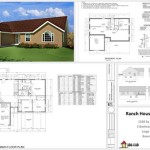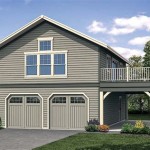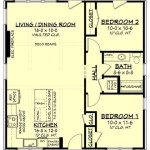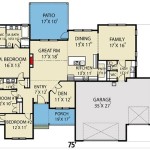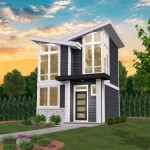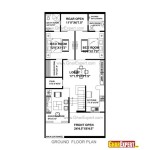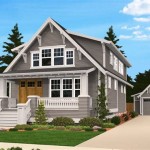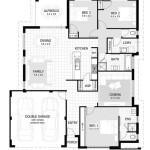In-Law Suite Home Plans: A Comprehensive Guide
The demand for multi-generational living arrangements has significantly increased in recent years. This shift has fueled interest in homes designed to accommodate extended families, particularly those featuring in-law suites. In-law suite home plans provide a solution for families seeking to live together while maintaining a degree of independence and privacy. These plans encompass a diverse range of designs, functionalities, and layouts, catering to various needs and preferences.
An in-law suite, also known as a granny flat, accessory dwelling unit (ADU), or secondary suite, is a self-contained living space integrated within or attached to the main residence. It typically includes a private bedroom, bathroom, living area, and kitchen or kitchenette. The purpose of an in-law suite is to provide a comfortable and independent living space for family members, such as elderly parents, adult children, or other relatives, fostering a sense of community while preserving individual autonomy.
The design and functionality of in-law suite home plans vary depending on several factors, including the homeowner's budget, available space, and specific needs of the occupants. Some in-law suites are integrated into the main house, sharing a common entrance and potentially some common areas. Others are designed as separate wings or additions, with private entrances and minimal shared space. Still others can be detached units from the main house.
Key Benefits of In-Law Suite Home Plans
In-law suite home plans offer several advantages for both homeowners and their families. These benefits contribute to improved living arrangements, financial stability, and overall well-being.
Enhanced Family Closeness and Support: One of the primary benefits of in-law suites is the opportunity for extended families to live closer together, fostering a sense of community and mutual support. This proximity allows family members to easily assist each other with childcare, eldercare, and other daily tasks. It also facilitates more frequent interaction and strengthens family bonds. In an era where families are often geographically dispersed, in-law suites provide a valuable opportunity to maintain close relationships and provide practical assistance to loved ones.
Financial Advantages: In-law suites can provide significant financial benefits for homeowners. By accommodating family members, they can help reduce housing costs for both parties. Elderly parents, for example, may be able to sell their homes and move into an in-law suite, freeing up capital for retirement or other expenses. Adult children who are saving for a down payment on their own home may also benefit from living in an in-law suite rent-free or at a reduced rate. Furthermore, some homeowners choose to rent out their in-law suites to tenants, generating rental income that can help offset mortgage payments or other expenses.
Increased Property Value: Homes with in-law suites often have a higher resale value than comparable homes without this feature. This is because in-law suites appeal to a wider range of potential buyers, including those who are seeking multi-generational living arrangements, those who need space for caregivers or visitors, and those who are interested in generating rental income. The addition of an in-law suite can significantly enhance the marketability of a property and increase its overall value. It is important to consult with local real estate professionals to understand the specific impact of an in-law suite on property values in a given area.
Factors to Consider When Choosing In-Law Suite Home Plans
Selecting the right in-law suite home plan requires careful consideration of several factors. These factors relate to the needs of the occupants, the limitations of the property, and local regulations.
Accessibility and Aging-in-Place Features: When designing an in-law suite for elderly parents or individuals with mobility limitations, it is crucial to incorporate accessibility and aging-in-place features. These features enhance safety, comfort, and independence for occupants as they age. Examples of accessibility features include wide doorways and hallways to accommodate wheelchairs or walkers, grab bars in bathrooms, lever-style door handles, and zero-entry showers. Other helpful features may include adjustable-height countertops, under-cabinet lighting, and non-slip flooring. Careful planning and attention to detail can ensure that the in-law suite is a safe and comfortable living space for years to come.
Privacy and Independence: Maintaining a balance between family closeness and individual privacy is essential when designing an in-law suite. The suite should provide a sense of independence and autonomy for its occupants. This can be achieved by incorporating a separate entrance, a private outdoor space, and sufficient sound insulation between the in-law suite and the main residence. Thoughtful design can help minimize disruptions and ensure that both the occupants of the in-law suite and the main house can enjoy their privacy. The degree of separation desired will depend upon the family's comfort levels.
Local Zoning Regulations and Building Codes: Before embarking on an in-law suite project, it is essential to research and comply with local zoning regulations and building codes. Many municipalities have specific rules regarding the construction and use of in-law suites, including restrictions on size, occupancy, and parking. Some jurisdictions may require permits or inspections for in-law suite projects. Failure to comply with local regulations can result in fines, legal penalties, or even the removal of the in-law suite. Consulting with local planning and building departments is crucial to ensure that the project is compliant with all applicable laws and regulations. Some cities might even prohibit the construction of an in-law suite if it doesn't meet certain size or setback restrictions. This can also affect the overall property taxes incurred.
Types of In-Law Suite Home Plan Designs
In-law suites can be integrated into a home in a variety of ways. The optimal design depends on the property layout, budget, and the desired level of separation between the main residence and the suite. Understanding the different design options can help homeowners select the plan that best suits their needs.
Attached In-Law Suites: An attached in-law suite is physically connected to the main residence, typically sharing at least one wall. These suites can be accessed through an interior door or a separate exterior entrance. Attached in-law suites can be incorporated into a new home construction or added to an existing structure as an addition. This type of design offers convenience and easy access to the main residence, while still providing a degree of privacy. Attached suites are cost effective compared to other options because utility lines are already in place, thus saving costs. Consider soundproofing to prevent noise disruption from the main house.
Detached In-Law Suites: A detached in-law suite, also known as a carriage house or backyard cottage, is a separate building located on the same property as the main residence. Detached suites offer the highest level of privacy and independence. These suites typically include a full kitchen, bathroom, living area, and bedroom. Detached in-law suites often require more extensive site preparation and infrastructure work, as they need their own utility connections (water, sewer, electricity). The detached suites have the advantage of having the most privacy for the occupants, while allowing for the main house to have more exterior space. The cost to build utilities to the detached structure can be high compared to other in-law suite alternatives.
Basement In-Law Suites: Converting a basement into an in-law suite is a common and cost-effective way to create a separate living space. Basement in-law suites can be relatively easy to implement if the basement already has adequate ceiling height, proper insulation, and sufficient natural light. However, it may be necessary to add egress windows or a separate entrance to comply with building codes. Basement suites generally involve less structural work compared to additions or detached suites, making them an attractive option for homeowners on a budget.
Above Garage In-Law Suites: Constructing an in-law suite above a garage is another popular option. This type of suite can be integrated into a new garage construction or added to an existing garage. Above-garage suites often have a separate entrance via an exterior staircase or, in some cases, an elevator. This design provides a degree of privacy and independence while minimizing the impact on the main residence. Ensure sufficient structural support for the garage. Also, include proper insulation to minimize noise transfer from the garage below.
Choosing the right in-law suite home plan requires a thorough understanding of the family's needs, budget, and local regulations. By carefully considering these factors and exploring the various design options, homeowners can create a comfortable, functional, and valuable addition to their property.

In Law Suite Plans Give Mom Space And Keep Yours The House Designers

Homes With Mother In Law Suites

Plan 65862 Tuscan Style House Floor Plans With 2091 Sq Ft 3 Be

Adding An In Law Suite Designing Your Perfect House

Pin By Jessie Brooks On Mother In Law Head Quarters 2024 Apartment House Floor Plans

6 Bedroom Country Style Home With In Law Suite The Plan Collection

Cape Cod House Plans With Inlaw Suite Best Of Mother In New Multigenerational Country

Exquisite Mountain Modern Home Plan With In Law Suite And 4 Car Garage 95104rw Architectural Designs House Plans

Front Side View House Plans With A Separate In Law Suite

House Plans With Mother In Law Suite

